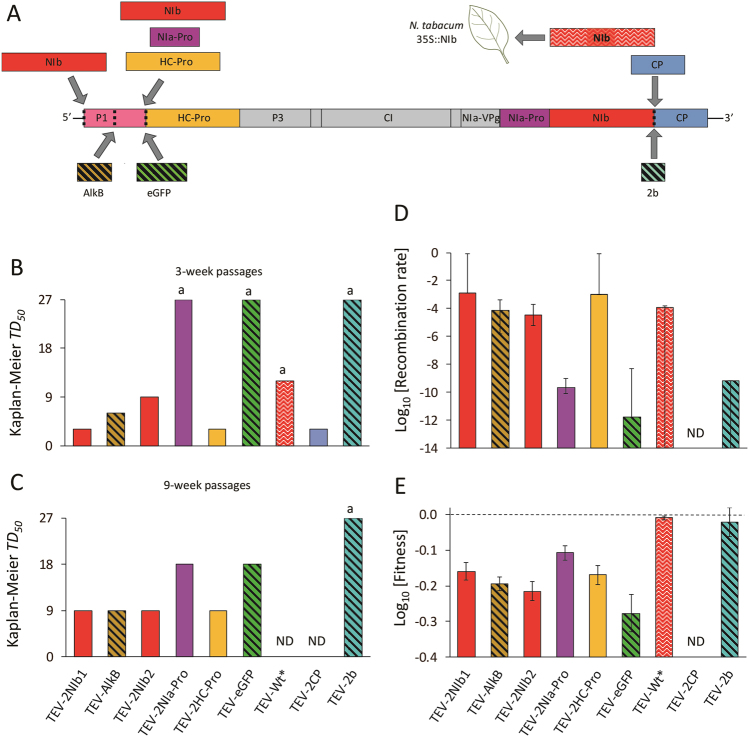Fig. 1.
(a) Overview of different viruses with gene inserts is given. Note that the color coding introduced in this panel is used consistently throughout the figure. Engineered genomes contain only one of the indicated insertions or translocations. The insertion of the virus NIb gene in the host genome makes this sequence redundant and leads to its loss, but for these experiments, a wild-type virus could be used. Hence this virus is referred to as TEV-Wt* in the figure. (b) and (c) Kaplan-Meier estimator of median survival (TD50) is given for the 3-week and 9-week passaging data, respectively. A letter “a” indicates that the survival time cannot be estimated because no or too few deletions had occurred when the experiment was stopped to allow for an TD50 estimate. (d) Estimated recombination rates and their 95% fiducial intervals, as estimated by bootstrapping. Recombination rate here means the rate at which deletions removing the insert completely or partially, and resulting in a viable virus occurs. When the lower fiducial limit for the recombination rate extends to zero, the error bar extends to a value of −14. (e) Previous estimates of the competitive within host fitness for these viruses, relative to the wild-type TEV virus. Errors bars represent the standard error of the mean (with 5 ≤ n ≤ 10, depending on each particular case). Note that the replicase NIb was expressed by transgenic plants in the case of the TEV-Wt* virus, and only four 3-week passages were performed. No recombination rate and fitness data (ND) were available for the TEV-2CP virus, given its extremely high instability. The column labels at the bottom of the figure correspond to both panels b and c or panels d and e

